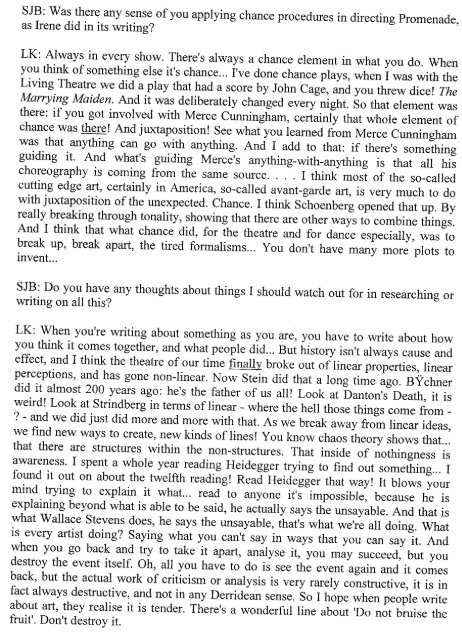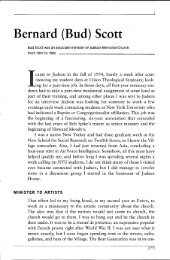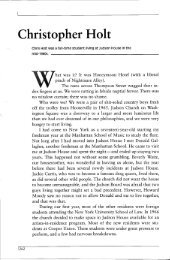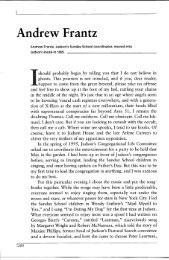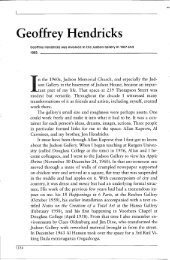LARRY KORNFELD INTERVIEW with Steve Bottoms, 9.95 - Judson ...
LARRY KORNFELD INTERVIEW with Steve Bottoms, 9.95 - Judson ...
LARRY KORNFELD INTERVIEW with Steve Bottoms, 9.95 - Judson ...
Create successful ePaper yourself
Turn your PDF publications into a flip-book with our unique Google optimized e-Paper software.
SJB: Was there any sense of you applying chance procedures in directing Promenade,as Irene did in its writing?LK: Always in every show. There's always a chance element in what you do. Whenyou think of something else it's chance ... I've done chance plays, when I was <strong>with</strong> theLiving Theatre we did a play that had a score by John Cage, and you threw dice! TheMarrying Maiden. And it was deliberately changed every night. So that element wasthere: if you got involved <strong>with</strong> Merce Cunningham, certainly that whole element ofchance was there! And juxtaposition! See what you learned from Merce Cunninghamwas that anything can go <strong>with</strong> anything. And I add to that: if there's somethingguiding it. And what's guiding Merce's anything-<strong>with</strong>-anything is that all hischoreography is coming from the same source. . . . I think most of the so-calledcutting edge art, certainly in America, so-called avant-garde art, is very much to do<strong>with</strong> juxtaposition of the unexpected. Chance. I think Schoenberg opened that up. Byreally breaking through tonality, showing that there are other ways to combine things.And I think that what chance did, for the theatre and for dance especially, was tobreak up, break apart, the tired formalisms ... You don't have many more plots toinvent. ..SJB: Do you have any thoughts about things I should watch out for in researchingwriting on all this?orLK: When you're writing about something as you are, you have to write about howyou think it comes together, and what people did ... But hIstory isn't always cause andeffect, and I think the theatre of our time finally broke out of linear properties, linearperceptions, and has gone non-linear. Now Stein did that a long time ago. BYchnerdid it almost 200 years ago: he's the father of us all! Look at Danton's Death, it isweird! Look at Strindberg in terms of linear - where the hell those things come from -? - and we did just did more and more <strong>with</strong> that. As we break away from linear ideas,we find new ways to create, new kinds of lines! You know chaos theory shows that...that there are structures <strong>with</strong>in the non-structures. That inside of nothingness isawareness. I spent a whole year reading Heidegger trying to find out something ... Ifound it out on about the twelfth reading! Read Heidegger that way! It blows yourmind trying to explain it what... read to anyone it's impossible, because he isexplaining beyond what is able to be said, he actually says the unsayable. And that iswhat Wallace <strong>Steve</strong>ns does, he says the unsayable, that's what we're all doing. Whatis every artist doing? Saying what you can't say in ways that you can say it. Andwhen you go back and try to take it apart, analyse it, you may succeed, but youdestroy the event itself. Oh, all you have to do is see the event again and it comesback, but the actual work of criticism or analysis is very rarely constructive, it is infact always destructive, and not in any Derridean sense. So I hope when people writeabout art, they realise it is tender. There's a wonderful line about 'Do not bruise thefruit'. Don't destroy it.


